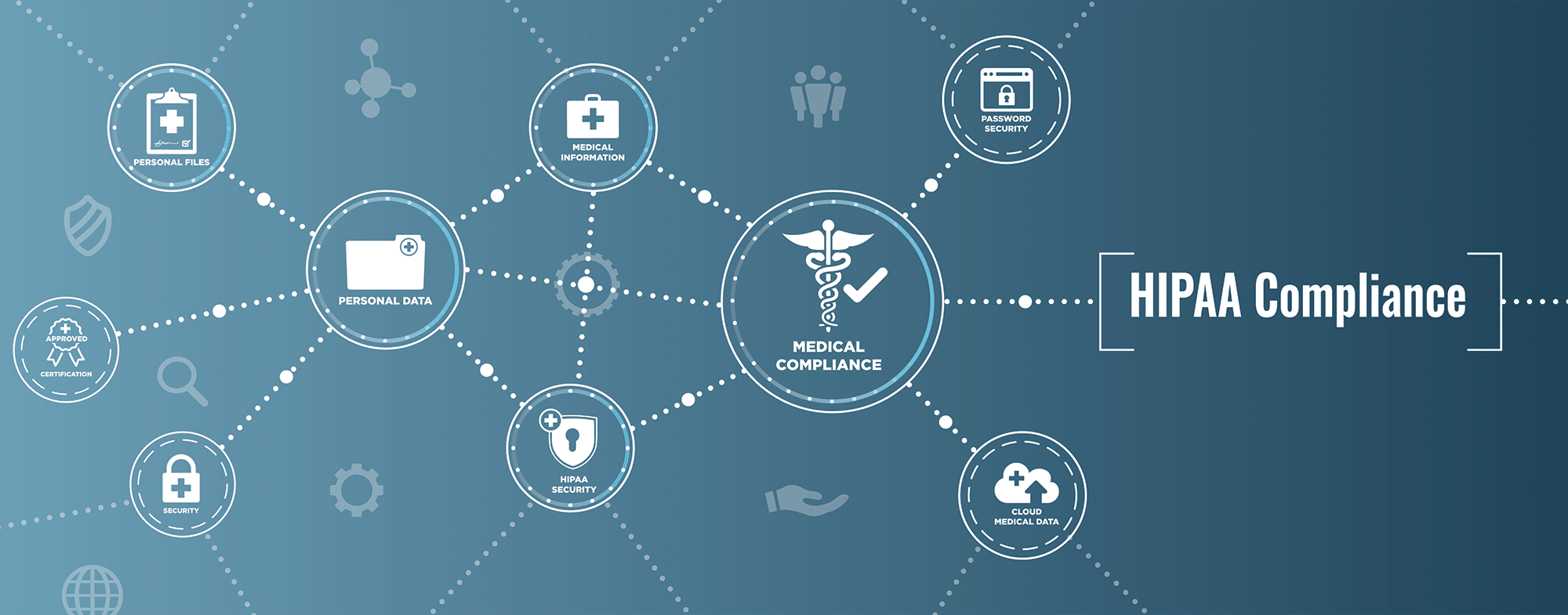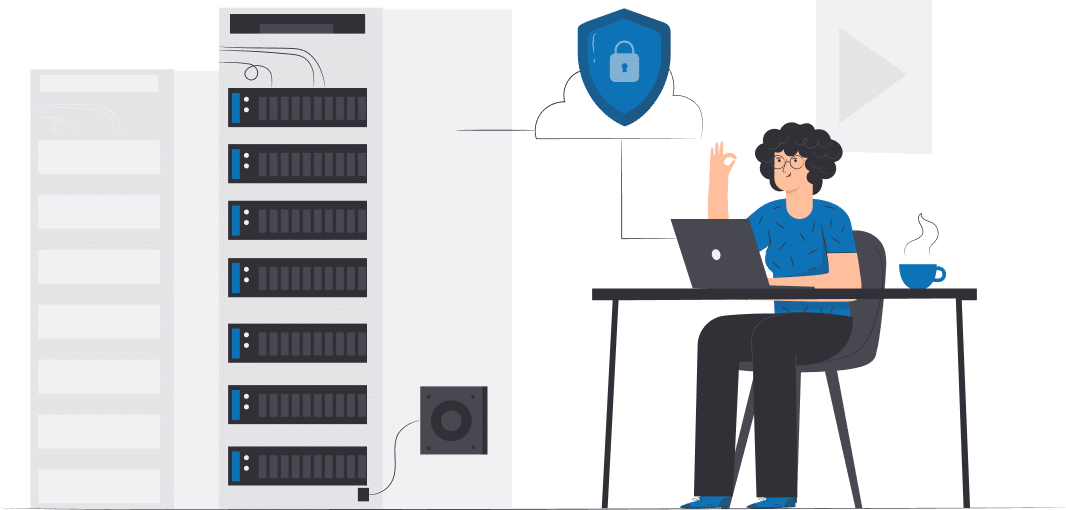In the digitally-driven landscape of financial services, cybersecurity is of paramount importance. In fact, its significance can’t be overstated. Financial services companies are the custodians of not only their customer’s financial assets, but also a massive amount of sensitive and confidential data. If this data falls into the wrong hands, the consequences can be devastating.
Financial services encompass a wide array of businesses including banks, insurance companies, investment funds, and more. Each of these entities relies heavily on technology and data as they are digitizing processes, embracing artificial intelligence, adopting cloud-based services, and utilizing big data analytics. While these advancements are enhancing efficiency and customer experience, they are also expanding the cyber threat landscape. Therefore, ensuring the security and integrity of data stored in computers, networks, and systems used by these companies is no longer an option, but rather an absolute necessity.
The nature of information handled by financial services companies – such as personal identification information, account details, and transaction histories – is incredibly enticing for cybercriminals, making these firms are often prime targets for cyberattacks, which can lead to data breaches, identity theft, financial loss, and reputational damage.
But the threats are not just external. The risks can be internal too, emanating from human error, insider threats, or system failures. Hence, a robust cybersecurity strategy for a financial institution is one that takes a 360-degree view of all possible threat vectors and puts in place proactive measures to guard against them.
What is Cybersecurity?
Cybersecurity refers to the methodologies and practices aimed at protecting digital assets, including computers, networks, and data, from various types of threats. With cyber threats evolving at an alarming pace, financial services companies must stay ahead of the curve by regularly updating their systems and adhering to the latest banking cybersecurity regulations and requirements.
Cybersecurity measures help to mitigate a plethora of risks that can occur, such as identity theft, data tampering, and unauthorized access. Following the best practices for cybersecurity in the banking sector and adhering to cybersecurity requirements for financial services companies are non-negotiable steps towards ensuring robust cyber defense and by investing in these measures, banks can significantly reduce their vulnerability to cyberattacks and ensure the protection of their customer’s data.
The Growing Need for Cybersecurity in Financial Services
The importance of the blue sector has grown exponentially over the years. Technological advancements have brought about remarkable efficiency and convenience in financial transactions. However, the increased digitization and interconnectedness have also brought about new opportunities for vulnerabilities and threats.
The financial services sector, with its vast repositories of sensitive customer data and monetary assets, has become a prime target for cybercriminals. Cyberattacks in this industry can lead to substantial financial losses, reputational damage, and loss of customer trust. Thus, the need for cybersecurity in the financial services sector is more crucial than ever before.
It’s clear that financial institutions must fortify their defenses and adopt a proactive stance in managing cybersecurity risks. In the next sections, we will delve deeper into the major risk factors faced by financial services and how they can tackle them effectively.
What Are the Major Risk Factors for Financial Services?
Financial services companies operate within an increasingly complex digital landscape, with each technological advancement and integration opening potential avenues for cyber threats. The risks they face are multi-faceted and substantial, with the following representing some of the most significant ones.
Cyberattacks
Cyberattacks constitute one of the most prominent threats to the financial sector, as the vast wealth of data and financial assets they holdmake them prime targets for cybercriminals. Attacks can take various forms, each designed to exploit different vulnerabilities in a company’s security infrastructure.
Phishing attempts, for instance, are common. These attacks aim to trick employees into revealing sensitive information, such as usernames and passwords, which can then be used to gain unauthorized access to systems.
More advanced threats include ransomware attacks, where a hacker encrypts an organization’s data and demands a ransom for its release, and Distributed Denial of Service (DDoS) attacks, which aim to overwhelm a network with traffic, thereby causing service disruptions.
Increasingly, financial services companies also have to contend with Advanced Persistent Threats (APTs). These are long-term targeted attacks where hackers gain access to a network and remain undetected for extended periods, allowing them to steal data or monitor activities stealthily.
Data Loss and Theft
Financial services companies handle an array of sensitive customer data: personal identification information, account details, transaction records, and more. This data is essential for day-to-day operations, and it’s also a prime target for cybercriminals due to its high value.
Data loss can occur due to various reasons, from hardware failure and human error to cyberattacks. Irrespective of the cause, the loss of critical data can have severe consequences, including operational disruptions, financial loss, and regulatory penalties.
Data theft, on the other hand, involves unauthorized individuals gaining access to confidential data. Cybercriminals can use this stolen data for numerous illicit activities, including identity theft, fraudulent transactions, or selling the data on the dark web.
Regardless of the means, the loss or theft of data can be catastrophic for a financial institution, causing significant financial and reputational harm, and potential legal repercussions.
Reputational Damage
The impact of cyber threats extends beyond immediate financial loss. Reputational damage, often a byproduct of successful cyberattacks or data breaches, is another significant risk facing financial services companies.
In an industry where trust is paramount, a breach that compromises customer data can cause irreversible damage to a company’s reputation. Customers entrust financial institutions with their most sensitive information and any breach of this trust can lead to a loss of customer confidence, potentially resulting in customer attrition.
Moreover, news of a security breach can spread quickly, particularly in the age of social media, leading to negative publicity and damage to a company’s brand image. This can not only affect customer retention but can also impact a company’s ability to attract new customers.
In a highly competitive industry, maintaining a strong reputation is vital as it plays a critical role in customer acquisition and retention, the ability to attract top talent, and overall business growth.
Understanding and effectively mitigating these risks is crucial for financial services companies. It not only helps in protecting sensitive data and systems but also ensures the trust of customers, the lifeblood of the industry.
Regulations Aimed at Enhancing Financial Services Security
In the face of ever-growing cybersecurity risks, regulatory bodies worldwide have laid down a set of rules and guidelines aimed at enhancing the security posture of financial services. These regulations act as a guiding light for financial institutions, helping them maintain a robust defense mechanism and ensuring the security of the customer’s sensitive information.
Banking Regulations
Banking regulations span across multiple jurisdictions, with each having its own set of rules and measures for safeguarding the integrity of financial data. These regulations are an amalgamation of proactive and responsive measures aimed at ensuring financial institutions have the wherewithal to not just mitigate cybersecurity threats but to recover swiftly should a breach occur.
For example, in the U.S., the Federal Financial Institutions Examination Council (FFIEC) offers an extensive framework designed to help financial institutions identify, measure, mitigate, and monitor risks associated with their operations. This framework serves as a guide for banks and other financial institutions, helping them adhere to best practices, keep pace with the evolving threat landscape, and ensure a holistic approach to cybersecurity.
Compliance with these regulations is not merely about avoiding hefty penalties and sanctions. Instead, it’s about reinforcing the cybersecurity defenses of financial institutions, thereby ensuring the security and confidentiality of customer data, and strengthening the trust between the institution and its clients.
Fintech Regulations
The rise of fintech companies has been nothing short of a revolution in the financial sector. However, the rapid innovation and disruption also bring along a new set of cybersecurity risks, necessitating a fresh look at regulatory measures.
Regulatory bodies around the globe have now turned their attention to this emerging field. For instance, the European Union’s General Data Protection Regulation (GDPR) imposes stringent rules on how personal data is handled, extending its reach to include fintech companies. It mandates these companies to ensure the safety of customer data and provide transparency about how this data is used.
These regulations serve as a constant reminder for fintech companies to prioritize cybersecurity, ensuring that the innovative solutions they bring to the market are secure and reliable. They also offer a much-needed framework for these companies to balance rapid innovation with solid security measures.
Understanding these regulations and ensuring compliance is a crucial part of a financial institution’s cybersecurity strategy. Not only does it help in maintaining the trust of customers and stakeholders, but it also safeguards the institution from potential cyber threats.
Financial Services Security Best Practices
Building a secure financial services infrastructure is a multifaceted challenge that requires a comprehensive approach. Here are some of the best practices that can help financial services companies enhance their security:
Strengthen Security Protocols
Security protocols serve as the backbone of any cybersecurity infrastructure providing the rules and standards that govern how data is secured during transmission and storage. Strengthening these protocols is paramount in ensuring the overall security posture of financial services companies.
One significant aspect of this is the implementation of advanced encryption for data both at rest and in transit. Encryption converts readable data into a coded form, rendering it useless to anyone who does not possess the decryption key. Advanced encryption standards, such as AES-256, provide robust protection against data breaches.
Using secure coding practices is another critical component. Developers should follow established secure coding guidelines, such as the OWASP Secure Coding Practices, which provide a comprehensive checklist to help developers avoid common programming errors that can lead to security vulnerabilities.
Patch management and vulnerability scanning are also vital. Regular updates and patches ensure that potential security flaws in software are promptly addressed. Vulnerability scanning helps in detecting these flaws, enabling teams to fix them before they can be exploited by malicious actors.
Finally, investing in state-of-the-art security tools and technologies, like advanced firewalls, intrusion prevention systems, and anti-malware solutions, can significantly enhance an organization’s defense capabilities. These tools provide real-time protection and detection capabilities, helping to identify and respond to threats promptly.
Train Employees
Even the most advanced security systems can be rendered ineffective if employees are not properly trained in cybersecurity best practices. Human error, often stemming from a lack of awareness or understanding of the potential risks, is one of the leading causes of security breaches.
Regular cybersecurity training should be mandatory for all employees, regardless of their role. Such training should cover a wide range of topics, from the basics of password security and safe internet use to more advanced topics like recognizing phishing attempts and other forms of social engineering.
Specific training should also be provided on handling sensitive data. Employees need to understand the value of the information they handle daily and the implications of a data breach as this understanding helps cultivate a culture of security within the organization.
Segment Network
Network segmentation is a critical security measure that involves dividing a computer network into multiple parts or segments. By doing this, organizations can limit the spread of a cyber threat if one part of the network is compromised.
Each segment can host different parts of the system. For example, one segment may host the organization’s customer database, another might host the internal email system, while a third could host the company’s website. Segmentation should be based on factors such as the function, the need for access, and the sensitivity of the data contained.
Moreover, network segmentation also provides benefits in terms of performance, fault isolation, and traffic management. However, this requires careful planning and management to ensure that implementing network segmentation doesn’t negatively impact network performance or business operations.
Implement Access Controls
Access controls are security measures that determine who can access a computer network and what they can do within it. The principle of “least privilege” should be applied, meaning that users should be given the minimum levels of access necessary to perform their roles.
Two-factor authentication (2FA) should be standard for all user accounts, adding an extra layer of security to prevent unauthorized access. Biometric authentication, such as fingerprint or facial recognition, can provide even higher levels of security.
Moreover, password policies should be strict and enforced, including requirements for password complexity and length, as well as regular password changes.
Regular audits of access controls are necessary to ensure they are working as intended and to identify any potential issues or vulnerabilities. This can include checking that ex-employees’ accounts have been deactivated and that current employees have the correct access rights.
Monitor Network Activity
Monitoring network activity is critical in identifying unusual or suspicious behavior that may indicate a cyber threat. This should be a continuous process, with automated systems in place to alert security personnel to potential issues.
Intrusion detection systems (IDS) are a key tool for network monitoring. These systems monitor network traffic for suspicious activity or known threats, alerting security teams if anything unusual is detected.
Moreover, network traffic analysis can provide valuable insights into what is happening on the network. This can help in identifying patterns or trends that may indicate a security issue, such as an unusually high amount of data being transferred out of the network, which could suggest a data breach.
Use Secure Systems
Last but certainly not least, using secure systems is essential. Whether it’s choosing a reputable cloud service provider with strong security credentials or implementing secure on-premises solutions, the security of the systems used by a financial institution can significantly impact its overall cybersecurity posture.
Consideration should be given to the security of systems at every stage of their lifecycle, from design and implementation to operation and decommissioning. Security should be built into systems from the design stage, rather than being added on later.
When using cloud services, financial institutions need to ensure they understand the shared responsibility model. While the cloud provider is responsible for the security of the cloud infrastructure, the customer is responsible for securing the data they put into the cloud.
Regardless of the specifics, what’s clear is that an organization-wide, comprehensive approach to cybersecurity is not just beneficial, but rather essential for financial services companies looking to safeguard themselves from the ever-evolving landscape of cyber threats.
Conclusion: Taking Financial Services Cybersecurity Seriously
Cybersecurity is a multifaceted and pressing issue that financial services companies can’t afford to sideline. It is no longer about having an optional defense mechanism in place but a strategic business requirement. It is not just about safeguarding digital assets and sensitive data; it’s about building resilience into the very fabric of the organization.
Given the implications of a successful cyberattack, these companies must stay ahead of potential threats. This involves continuously assessing the threat landscape, updating security measures in line with evolving threats, and ensuring compliance with the latest regulations.
Moreover, it’s about protecting the institution’s reputation, a key asset in the financial services industry. A cybersecurity incident can inflict long-lasting damage to a company’s image, leading to loss of customer trust, a decrease in market value, and potentially, regulatory sanctions.
But perhaps the most significant aspect of cybersecurity in financial services is about maintaining customer trust. Customers need to be confident that their data and money are safe. Without this trust, no financial institution can hope to succeed.
By understanding the inherent risks, following cybersecurity best practices, and cultivating a culture of security awareness, financial services companies can significantly enhance their cybersecurity posture. They can build robust defenses that protect against cyber threats, assure stakeholders of their security commitment, and forge a path toward a secure digital future.
In this ever-evolving cyber landscape, taking cybersecurity seriously is not just a necessity—it’s a matter of survival. The financial services companies that prioritize cybersecurity today will be the industry leaders of tomorrow.
Take-Aways: Proactive Strategies for Financial Services Security
As we close this extensive discussion on the cybersecurity threats facing the financial services sector, we recognize the complexity and dynamism of the challenge. But rather than be overwhelmed, it is essential to focus on proactive strategies that can provide a solid defense against the myriad of cyber threats.
Here are some key takeaways:
- Adopt a risk-based approach: Each organization’s risk landscape is unique, thus necessitating a customized cybersecurity strategy. Identify your most valuable and vulnerable assets, understand the potential threats, and implement controls that address these risks.
- Strengthen security protocols: From encryption and secure coding to regular vulnerability assessments and patch management, invest in advanced security technologies and processes. It’s about building a solid defense that can protect against external threats and internal weaknesses.
- Empower through training: Recognize that your employees can be your biggest asset or your weakest link. Regular training can raise awareness, encourage best practices, and turn your employees into an effective line of defense.
- Embrace segmentation: Breaking your network into smaller, isolated segments can limit the potential impact of a breach. An attacker may infiltrate one segment but will find it harder to traverse across the network.
- Implement strict access controls: Limiting who can access what data and when, is a vital part of a robust security strategy. From two-factor authentication to strict password policies, these controls can prevent unauthorized access to sensitive data.
- Monitor and respond: Real-time monitoring of network activity coupled with an effective incident response plan can minimize the damage from a breach. It’s about detecting threats early and responding swiftly and decisively.
- Choose secure systems: Whether it’s selecting a secure cloud service provider or implementing an on-premise solution, ensure that every system or technology adopted meets high-security standards.
- Compliance is critical: Stay abreast of the latest regulatory requirements and ensure adherence. Compliance not only helps you avoid fines and sanctions but also demonstrates your commitment to cybersecurity to your stakeholders.
- Adopt a culture of cybersecurity: From the boardroom to the breakroom, everyone in the organization should understand the importance of cybersecurity. It’s about fostering a culture where security is considered in every decision and action.
In the end, effective cybersecurity in financial services is about vigilance, resilience, and adaptability. By taking proactive steps today, you can protect your organization from the cybersecurity threats of tomorrow.







